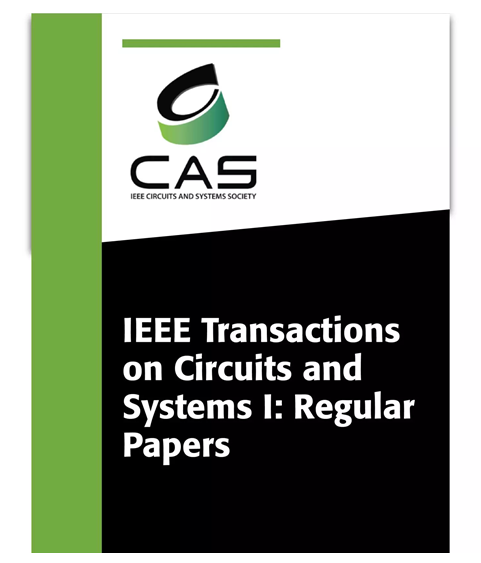A Unified Accelerator for All-in-One Image Restoration Based on Prompt Degradation Learning
IF 5.2
1区 工程技术
Q1 ENGINEERING, ELECTRICAL & ELECTRONIC
IEEE Transactions on Circuits and Systems I: Regular Papers
Pub Date : 2025-01-01
DOI:10.1109/TCSI.2024.3519532
引用次数: 0
Abstract
All-in-one image restoration (IR) recovers images from various unknown distortions by a single model, such as rain, haze, and blur. Transformer-based IR methods have significantly improved the visual effects of the restored images. However, deploying complex IR models on edge devices is challenging due to massive parameters and intensive computations. Moreover, existing accelerators are typically customized for a single task, resulting in severe resource underutilization when executing multiple tasks. Therefore, this paper develops an algorithm-hardware co-design framework to accelerate a novel CNN-Transformer cooperative model for multiple IR tasks. Firstly, on the algorithm level, an Efficient Restoration Foundational Model (ERFM) is proposed to recover corrupted images from various degradations with low model complexity. Secondly, to guide adaptive corruption removal, a novel prompt learning scheme is introduced to fuse context-related degradation cues and boost high-quality reconstruction. Thirdly, on the hardware level, an integer approximation method is proposed to avoid expensive hardware overhead caused by complex nonlinear operations, such as layer normalization and softmax while maintaining comparable IR quality. Moreover, a head stationary dataflow and softmax fusion mechanism are designed to reduce data movement and enhance on-chip resource utilization. Finally, an overall hardware architecture is developed and implemented in TSMC 28 nm CMOS technology. Experimental results show that our ERFM achieves better visual perception than other baselines on seven challenging IR tasks without task-specific fine-tuning. Moreover, compared to other accelerators for vision Transformers, our design can achieve基于快速退化学习的一体化图像恢复统一加速器
一体化图像恢复(IR)通过单一模型从各种未知失真中恢复图像,如雨,雾霾和模糊。基于变换的红外方法显著改善了恢复图像的视觉效果。然而,由于大量的参数和密集的计算,在边缘设备上部署复杂的红外模型是具有挑战性的。此外,现有的加速器通常是为单个任务定制的,这导致在执行多个任务时资源利用率严重不足。因此,本文开发了一种算法-硬件协同设计框架,以加速一种新的CNN-Transformer多IR任务协同模型。首先,在算法层面,提出了一种高效恢复基础模型(ERFM),以较低的模型复杂度从各种退化中恢复损坏图像。其次,为了指导自适应腐败去除,引入了一种新的提示学习方案来融合与上下文相关的退化线索并提高高质量的重建。第三,在硬件层面,提出了一种整数逼近方法,避免了复杂非线性操作(如层归一化和softmax)带来的昂贵硬件开销,同时保持了相当的红外质量。此外,还设计了头部固定数据流和softmax融合机制,以减少数据移动,提高片上资源利用率。最后,以台积电28纳米CMOS技术开发并实现了整体硬件架构。实验结果表明,在没有特定任务微调的情况下,我们的ERFM在7个具有挑战性的红外任务上获得了比其他基线更好的视觉感知。此外,与其他用于视觉变压器的加速器相比,我们的设计可以在吞吐量和能源效率方面实现3.3倍和3.7倍的改进。
本文章由计算机程序翻译,如有差异,请以英文原文为准。
求助全文
约1分钟内获得全文
求助全文
来源期刊
CiteScore
9.80
自引率
11.80%
发文量
441
审稿时长
2 months
期刊介绍:
TCAS I publishes regular papers in the field specified by the theory, analysis, design, and practical implementations of circuits, and the application of circuit techniques to systems and to signal processing. Included is the whole spectrum from basic scientific theory to industrial applications. The field of interest covered includes: - Circuits: Analog, Digital and Mixed Signal Circuits and Systems - Nonlinear Circuits and Systems, Integrated Sensors, MEMS and Systems on Chip, Nanoscale Circuits and Systems, Optoelectronic - Circuits and Systems, Power Electronics and Systems - Software for Analog-and-Logic Circuits and Systems - Control aspects of Circuits and Systems.

 求助内容:
求助内容: 应助结果提醒方式:
应助结果提醒方式:


